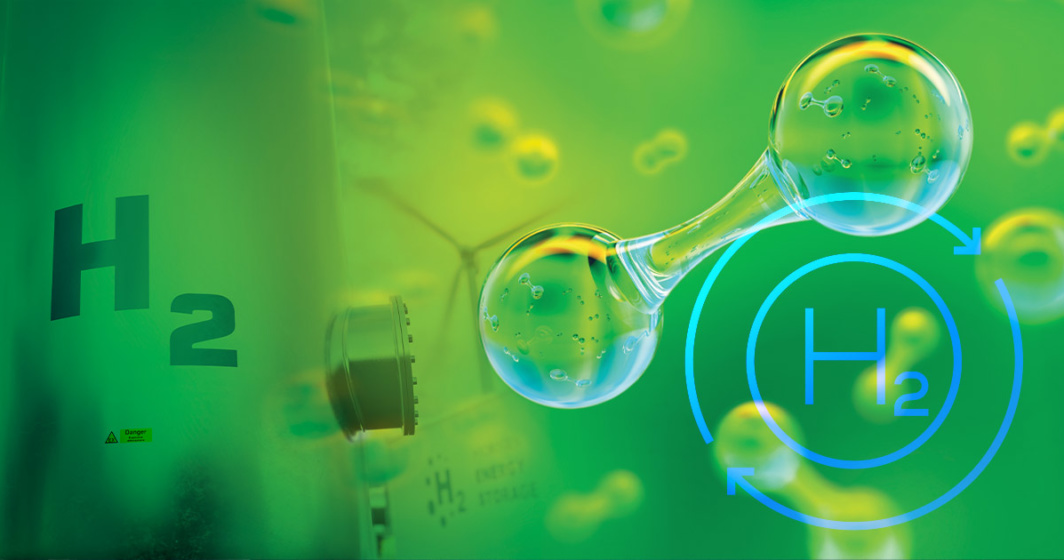Master Plumbers believes embracing green hydrogen will go a long way to meeting our goal of net zero emissions by 2050.
The plumbing and gasfitting industry has an exciting opportunity to lead the charge towards a nation-wide push towards green hydrogen, in line with the commitment several Australian states and territories have made to produce net zero emissions by 2050.
That’s the conclusion of a new discussion paper prepared for Master Plumbers, which outlines the significant opportunities and challenges presented to the industry by the shift towards hydrogen.

Australia’s Chief Scientist Dr Alan Finkel describes hydrogen as “a zero emissions fuel that exists on Earth in abundance, can easily be extracted using basic chemistry and offers jobs and investment in Australia for decades to come.”
Traditionally, hydrogen has been produced by coal and gas. This ‘grey’ hydrogen, as it has become known, emits carbon dioxide. According to the International Energy Agency, around 830 million tonnes of carbon dioxide is pumped into the environment each year due to the production of hydrogen.
As Governments around the world grapple with options to achieve net zero emissions and create more sustainable futures for generations to come, ‘green’ hydrogen has the potential to be a key enabler.
As the name suggests, green hydrogen is the cleanest type of hydrogen, generated by renewable energy sources without emitting any carbon in the first place. The process of creation involves electrolysis, which extracts hydrogen from water. When the electrolyser (the device which splits water into hydrogen and oxygen using electrical energy) is powered by renewable energy, the whole process is emission free.
Gary Bath, Chief Technical Officer with Master Plumbers, says green hydrogen can play a key role moving forward.
“The future for the gas industry currently rests with the possibilities surrounding bio-gas and hydrogen. Hydrogen, if produced economically and renewably, could provide a safe and effective gas for the future, either through injecting into existing natural gas infrastructure or as a stand-alone fuel gas,” he says.
This will involve a big shift for southern states of Australia, who have traditionally relied on natural gas for heating.
“Electrical generation in Australia is moving towards renewable sources, (wind, solar and hydro) at 24% but Coal (54%) and gas (20%) show that we are still fossil fuel reliant for electrical generation,” Gary says.
“State rebate schemes are driving some of this change encouraging consumers to move, from so called “inefficient gas hot water systems and heating appliances” to heat pumps and refrigerated air conditioning units. While the increased efficiency of both types of appliances has improved are we ready for the potential increased load on our electrical grid?”
New South Wales, Queensland, Victoria and South Australia have developed hydrogen strategies, and a National Hydrogen Strategy released by the Federal Government outlines two key phases - the present day until 2025, which will allow for the piloting, trialing and demonstration projects as well as large-scale market activation from 2025 onwards.
As Master Plumbers’ discussion paper outlines, hydrogen could be a long-term alternative to natural gas in the Australian domestic market.
Dr Alan Finkel has concluded that hydrogen is no longer just a good idea, but a realistic and sustainable energy solution that can meet both domestic and commercial energy needs, with the potential to lower power production, lower carbon emissions and deliver wider economic benefits.
Hydrogen can be safely added to natural gas supplies at 10% by volume without changes to pipelines, appliances or regulations. Over time, and with modifications to the existing gas networks and appliances, hydrogen has the potential to completely replace natural gas for domestic cooking, heating and hot water.
So, what does this mean for the plumbing industry? With about 20,000 licensed gasfitters of 28,000 licensed plumbers in Victoria, there is enormous potential for the plumbing industry to help lead the transition to hydrogen in line with state and territory targets.
The skills required for water electrolysis and fuel cells will not be too different from current practices, but it is possible that more gasfitters will be required to undertake a restricted electrical license (REL) training. The discussion paper highlights that the existing skill sets of plumbers and gasfitters ensures they are well equipped to deal with hydrogen.
“The plumbing and gasfitting industries can be at the forefront of the push across Australian states and territories towards net zero emissions, of which hydrogen energy sources will play an enormous role,” says Master Plumbers CEO Peter Daly.
“We know that moving forward there will be extensive opportunities for gasfitters to play a critical role in the installation and maintenance of hydrogen alongside or in place of natural gas and LPG.”
A shift to hydrogen may require some infrastructure upgrades. For example, in Victoria, existing infrastructure is expected to accommodate blends of gas with 10% hydrogen but upgrades and retrofitting pipes may be required if we move to high blends or pure hydrogen.
This is because, at some temperatures and pressures, high concentrations of hydrogen gas can degrade the quality of metal and older plastic pipes and potentially make them more brittle. Hydrogen is also a much smaller molecule which makes some pipes and connections more prone to leakage. This can be addressed with retrofitting of parts of the existing network and through lining of pipes as we have done in the past in potable water and sewer networks.
Peter Daly says that Master Plumbers has been anticipating the current shift towards hydrogen for some time.
“That’s why our state-of-the-art PICAC training facilities in Brunswick and Narre Warren are being equipped with world-class hydrogen training equipment, including separate zones where training can structure towards hydrogen gas. In Queensland, a purpose built and world-class Hydrogen Centre of Excellence is being established to train or retrain practitioners to use blended or pure hydrogen safely.
“We believe that if Australia is to truly embrace and take advantage of the possibilities and opportunities provided by hydrogen, more training facilities may be needed in the future.
As Peter points out, hydrogen is not risk-free. It has a broader flammability range than natural gas and can react with certain metals which might result in changes to fittings and appliances.
“These risks can be controlled and managed, evidencing the critical nature of training to protect and support not only workers but also the general community. Our industry needs to play an important role in helping not only consumers but political leaders to understand these risks and respond to them appropriately.”
Questions to consider
- What do think are some of the key opportunities provided by the push towards green hydrogen for the plumbing and gas fitting industries?
- Can you identify any risks or concerns associated with this shift? If so, what are they?
- Do you think the existing skill sets for plumbers and gasfitters are well equipped to support a shift towards green hydrogen?
- Would you like the opportunity to engage in training and skill development to support you towards the shift to green hydrogen? Why or why not?
Email your thoughts to [email protected]
Share this Article






